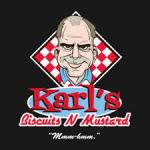
Originally Posted by
RMC

Thank you for having posted the Crowe and JBL Tech Note texts relative to this issue, they're providing the context and perspective in order to tackle the problem. Moreover, indicating the JBL HF horn distortion data is actually much worst than Eargle's "best case" type numbers. The 25% and 40% measured are quite large, therefore clearly showing where a major improvememt is deeply needed.
His theory is that you need a 15"/horn combo. That imperative offered only keeps users swimming in distortion, which btw they would never accept from another component! (e.g. amp), rather than trying helping them out of it or a notable reduction thereof.
Then he tries to make a case with partial info, using a worst possible dome mid as if it had any relevance, since very few would purchase a mountain shape dome mid response curve. Quite theoretical gymnastics. Who builds speakers using as bad as possible drivers? Probably no one or so, then definitely not a typical case, can't be called serious work.
For comparison with CD use he promotes, the maximum excursion of a typical JBL 4" compression driver is given at 0.55 mm (pic shown), and for the poor dome he chose to display "only has a 0.4mm of linear excursion" he wrote ( +/- he omitted). Calculating his way leads to a displacement capability difference between the two of only 0.15 (or 1/7th) of a single mm! Far from a biggie, and not very significant.
In addition, he treats the ATC dome mid like an exception, it isn't. People looking for dome mids, including for the 93 to 97 db sensitivity range, should see for themselves the ones offered (i did). Likewise for high sensitivity dome tweeters. Excluding cheap low-quality units, there remains a number of them for both types, obviously he didn't check.
Declaring/deciding the solution (need of 15"/horn) without having first established one's needs and goals, duty/use, db spl required, dispersion pattern needed, budget, etc. seems cavalier and sure doesn't help the DIY in making the best choices or decision for his own situation.
Harping on about horns he missed the most important opportunity he had: providing DIY/users with solutions, even suggestions, leading to a significant reduction of high CD/horn distortion. But he's offered them no alternatives to the problem as if there were only horns. Therefore they'll remain in double digit distortion, for many cases, and passing on the hot potato in DIY/users hands.
It should be more of a concern than he has shown. In view of his dome denial, plus distortion skepticism, its evident horn users and candidates for such are the ones that need to be rescued, not the junk dome he tried to convince with.l
Reality and/or practicality is horns are mostly useful in PA/SR work, over about 110-115 db level and/or where a specific sound dispersion pattern is important. Such require horns, many others don't or less so. Moreover, there's the case of people who like/prefer horns for whatever reason, good or bad, its their right and money too. But that doesn't mean horns are necessary for the person's use, its rather a personal choice, the result of influence or imposed by a cloning project. Naturally, going the horn way does come with higher distortion to endure...
In a lot of cases domes are an undeniable, practical and cost effective part of the solution to achieve lesser distortion.
Between DB's more output and distortion reduction (switching CD): "It is JBL's contention that the reduced distortion is the greater of these two benefits," (From horn document he posted). Thanks.
Richard
J. Eargle, Loudspeaker Handbook, 2nd Ed., P. 178



 Reply With Quote
Reply With Quote




